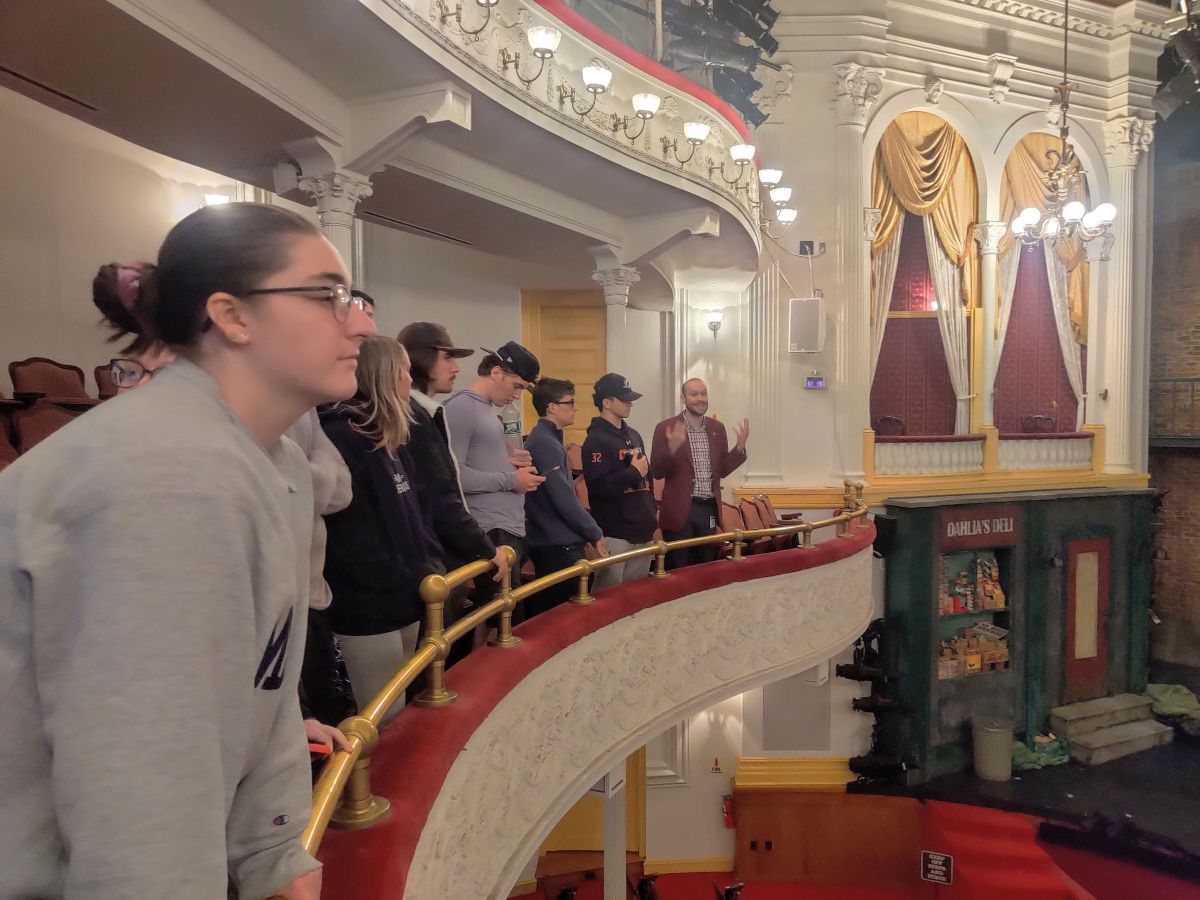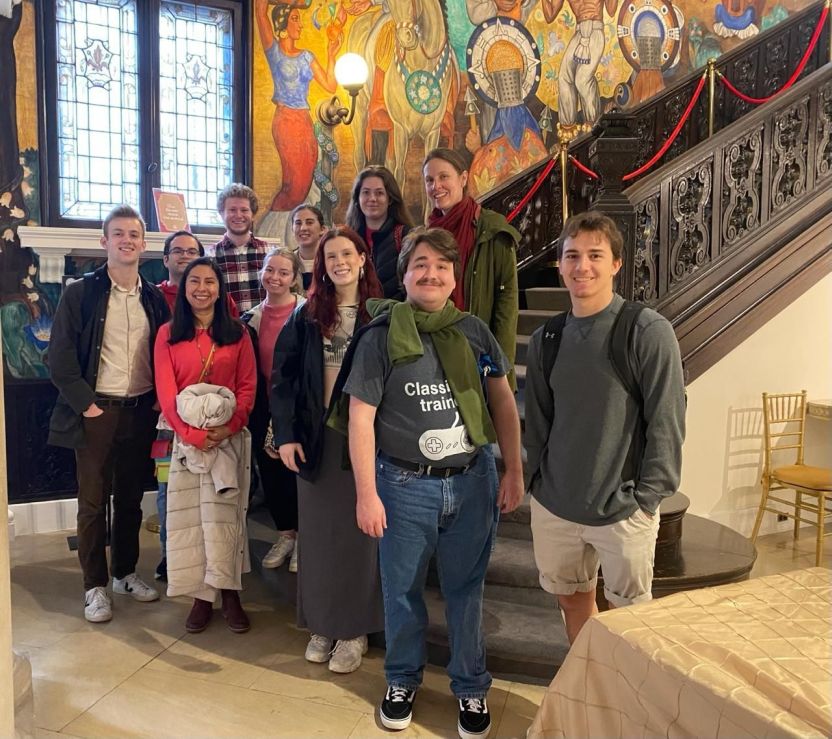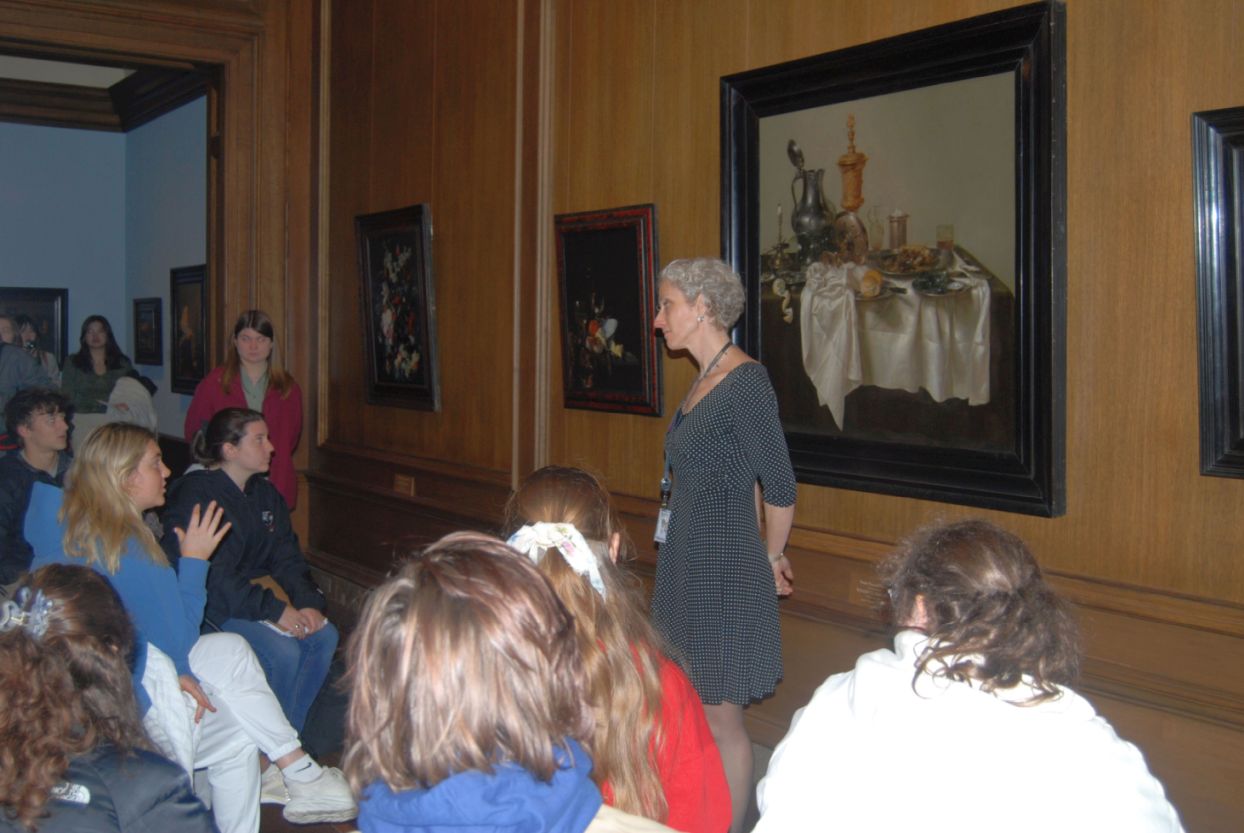There are lots of reasons why Washington D.C. is a terrific place to be a college student. The concentration of universities in the D.C. area means many Catholic University undergraduates form networks of friends and events across multiple campuses. The city has an international flavor, with embassies and cultural institutions abounding. It’s also “internship city”: approximately 64% of all Catholic University undergraduates do at least one internship, in government, business, museums, or elsewhere. Skim through the student bios on the university’s website and a common question is “Favorite place in D.C. to hang out?” (and the answers are usually the National Gallery of Art or Natural History Museum, the monuments on the National Mall, or something else along those lines).
Washington is also living history and history in the making. And in recent years the Department of History’s faculty have increasingly made a practice of incorporating excursions off campus to complement and enrich what goes on in the conventional classroom: an invaluable resource to deepen students’ tangible connections to what they’re studying.

Professor Stephen West, a specialist in 19th-century American, Civil War, and Reconstruction history, regularly teaches HIST 151: “Abraham Lincoln in History and Memory”, which examines Lincoln’s life and career, but also how successive generations have understood and commemorated his presidency and helped to shape his memory as symbol and meaning of America. He says: “One of the delights of teaching American history here at Catholic University is having the nation’s capital as our classroom. As part of HIST 151, we learn about Lincoln’s assassination by seeing where it happened at Ford’s Theatre [visit pictured above], and we talk about how the historic site presents that history to the public.” The class also visits what is now called “Lincoln’s Cottage”, nearly adjacent to our campus on the grounds of Soldiers’ Home, where Lincoln lived for more than one-quarter of his presidency.
Colin Matthews, now a rising sophomore in 2024-2025 who took the class in spring 2024, says : “As a CUA history major, living in D.C. provides a form of history like no other. In my experience, field trips such as Ford’s Theatre and the Lincoln’s Cottage presented the sheer tangibility of history. We’re mostly accustomed to observing our past via different forms of media and literature, but physical locations and objects really make history feel alive. In that way, we saw the reality of the past, helping our class to better understand what was, what is, and what our future could be. An experience like that was truly phenomenal.”

Professor Julia Young, a specialist in Mexican, Latin American, and migration history, teaches HIST 286, “Mexico and Mexican America”. One of the highlights of her last offering of this course (also in spring 2024) was a visit to the Mexican Cultural Institute, a center of cultural heritage and artistic dialogue between Mexico and the United States [visit pictured above]. Adam Cady said of the course: “Taking a Mexican history course at the Catholic University of America, the topics and historical events about which I learned came to life through CUA’s archives, great books collection, and the Basilica’s Latin American art in the Basilica of the National Shrine of the Immaculate Conception, including its depiction of Our Lady of Guadalupe. In my class, we were able to see and look through the original Mexican Declaration of Independence, as well as many other original documents and books that pertained to the class and Mexican history. It is difficult to imagine that other universities have such a wide array of historical resources that can help bring one’s history courses to life. My history course at CUA was a truly great experience.”

Professor Larry Poos teaches HIST 202, “Food: A Global History”, which covers the cultural, social, and economic meaning of food across wide ranges of time and space (sometimes augmented from his own kitchen, a passion of his). Washington has proven to offer a remarkably varied range of places to get insights into food history (an area of history that’s grown rapidly in scope in recent years). For instance, the class reads about depictions of food in art and discusses their meaning, and then visits the National Gallery of Art to be led through a series of still lifes by a member of the Gallery’s staff [visit pictured above]. Other visits are to the U.S. Department of Agriculture (to learn about food policy) and the Heurich House Museum (to get a tangible sense of the domestic and culinary life of Washington’s most important brewery owner more than a century ago).
In fact, it’s hard to imagine any of our courses that couldn’t have an off-campus component to it – the students love it!
